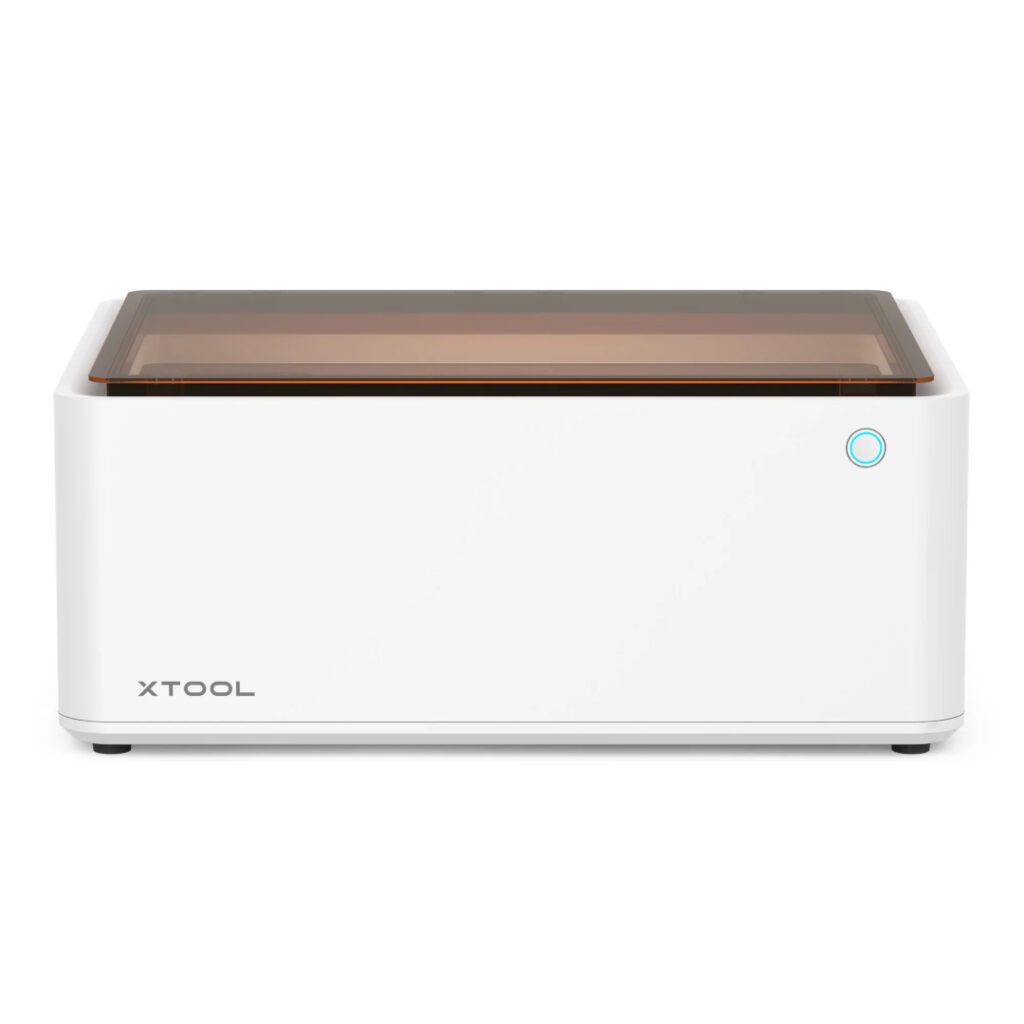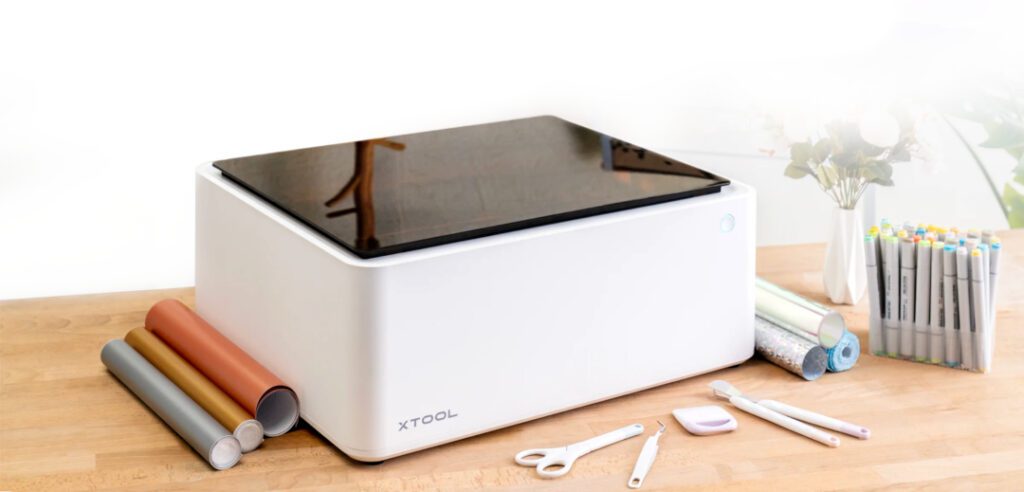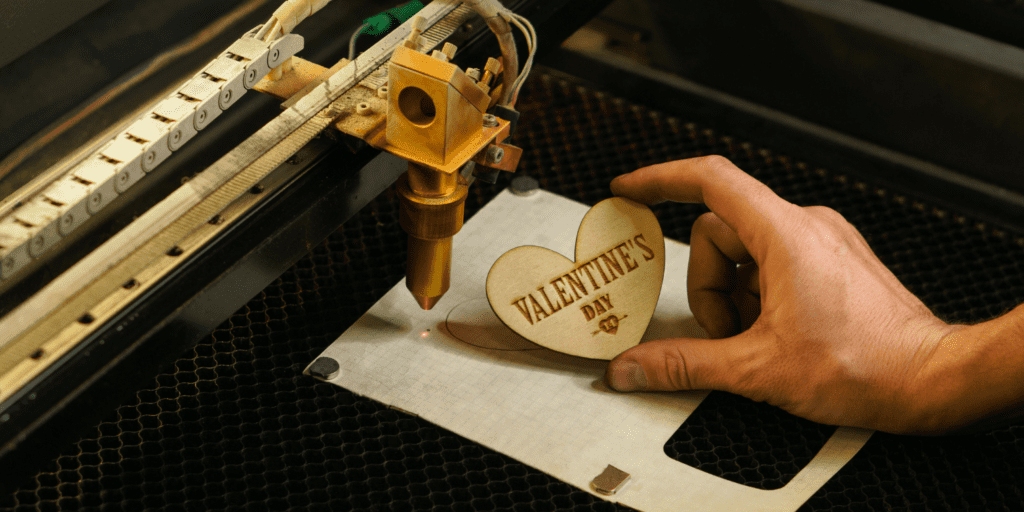Table of Contents:
Engraving has long been not just for specialists, although its level of difficulty varies depending on the type of engraving and tools. Here are a few reasons why the popularity of laser engraving has grown so significantly among hobbyists and professionals alike.
What is laser engraving?
A laser engraving machine, or laser engraver – you can equally often encounter the terms laser cutter and laser plotter – is a laser engraving machine that uses laser technology to process the surface of the work material to create patterns, lettering, graphics or other engravings.
More specifically, laser engraving is a process in which materials are processed into vapor to create gouges in the form of permanent, deep marks. The laser beam thus acts like a chisel and cuts the marks by removing layers from the surface of the material.
The laser strikes localized areas to generate the high heat required for vaporization. Laser engraving can be used to work with a wide range of materials, among which we find wood, metals and alloys, glass, plastic or stone. Language purists may be surprised by the nomenclature “engraving” – here we mean both the equipment and the craft itself.
Laser engraving process
That is, a small tutorial. Let’s start with the choice of material. Its properties will affect the engraving process, the absorption of laser energy and the resulting quality, hence the frequent discrepancy in what laser engraving manufacturers give us to choose from. We recommend creating a graphic or design that you want to engrave. Software such as Adobe Illustrator, CorelDraw or included with the engraving machine itself will come in handy here.
The best results will be guaranteed by the vector graphics format, which is followed by high precision and scalability. Place the material in the laser engraving machine and take care to secure it with clamps or other mechanisms depending on the model, and be sure to check that it is leveled before starting work. Laser settings are customized based on the material you will be working with, although we have pre-configurations available on many units.
Most laser engraving machines have an automatic focus setting function that simplifies preparations, but some machines require manual adjustment. The entire process, if done correctly, is completely safe and can be successfully performed at home. It is worth remembering that laser light requires configuration, because unlike a flashlight, which disperses white light evenly throughout a space, laser light creates a narrow beam that can travel much greater distances. Breaking down the fancy terms – it is highly collimated, moving in parallel instead of zigzagging.
Who is laser engraving for?
The first thing that comes to mind is advertising. The advertising industry and the traditional printing industry are increasingly taking advantage of enriching the workshop with a laser. You’ll find it in the production of signs, billboards, display elements or even neon signs, where precise cutting and marking of materials translates into creative, attractive advertisements. There’s nothing stopping us from using the laser in the apparel and textile industries, as the configurability of the process means we won’t always be dealing with a laser with the power of a lightsaber from the Star Wars saga. We can create patterns and embellishments, personalize clothing, handbags or accessories both leather and fabric.
Laser engraving machine - basics, construction, parameters
What are we even looking at? Usually the first to appear in descriptions engravers technicalities is a description of the working area in millimeters. This is the space in which the laser engraver can create, so its surface area is a limitation, so to speak. Laser power refers to the amount of energy the device is able to emit per unit time. Higher power usually means faster material removal, greater precision in complex designs, engraving in greater depth and information about the material at hand – it’s not hard to guess that engraving metal usually requires much more power than engraving wood.
With too much power on a given material, we can cause burnout or other damage. The wavelength of the laser affects how the material absorbs the laser energy and how the engraving or cutting process occurs. It is worth choosing a laser with the right wavelength for your specific application and the type of material you plan to process. They appear here most often:
- CO2 laser. The wavelength is about 10.6 micrometers. These lasers are effective for engraving and cutting materials such as wood, paper, fabric, leather and some plastics.
- Nd-Yag laser. The Nd-Yag (neodymium-yag) laser has different wavelengths, but the 1.06 micrometer (infrared) or 532 nanometer (green) modes are often used. They can be found in metal and ceramic engraving, but also in art close to tattooists or in aesthetic dermatology.
- Fiber laser is based on a fiber optic cable. It is particularly popular for machining thin materials with high precision, including stainless steel and aluminum.
- UV lasers have a wavelength in the ultraviolet range, typically around 355 nanometers. They are used for precision engraving on materials such as ceramics, some plastics and glass.
The accuracy and speed of engraving are unlikely to require further explanation. Instead, it’s worth noting compatibility, with engraving materials listed by the manufacturer, supported operating systems for computer operation and supported file formats for the project. Actually, most depends on the intended use – are you looking for something for homemade DIY engraving? Or should it be a marking machine? Are you interested in creative work, crafts or mass production? These are all issues worth thinking about before buying, and from there it’s a straight road to entering the world of engraving.
How useful was this post?
Click on a star to rate it!
Average rating 0 / 5. Vote count: 0
No votes so far! Be the first to rate this post.






















